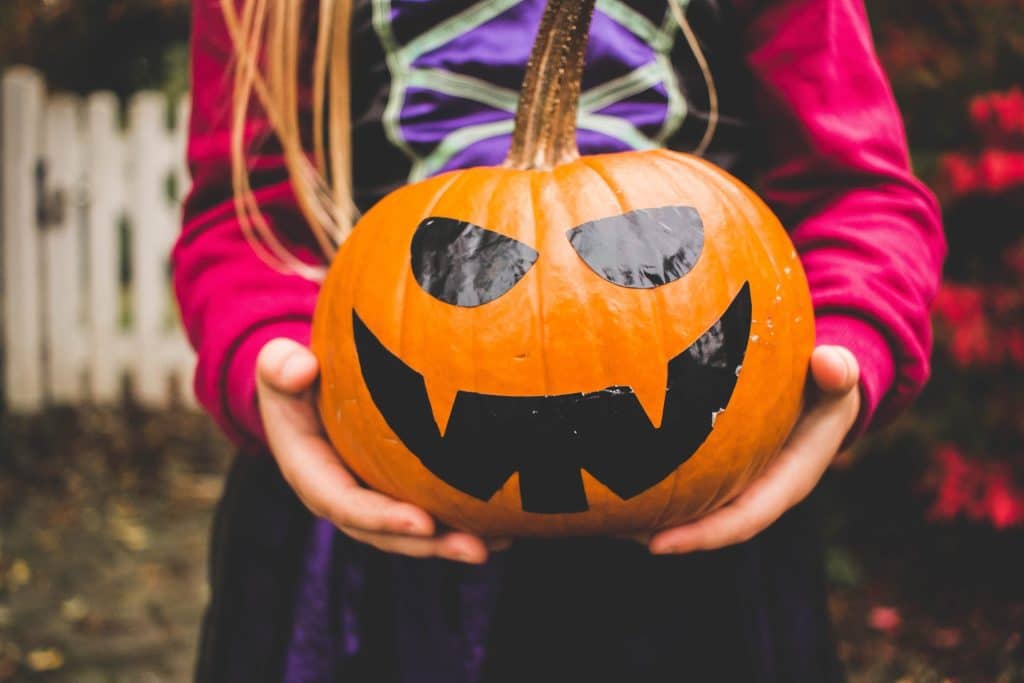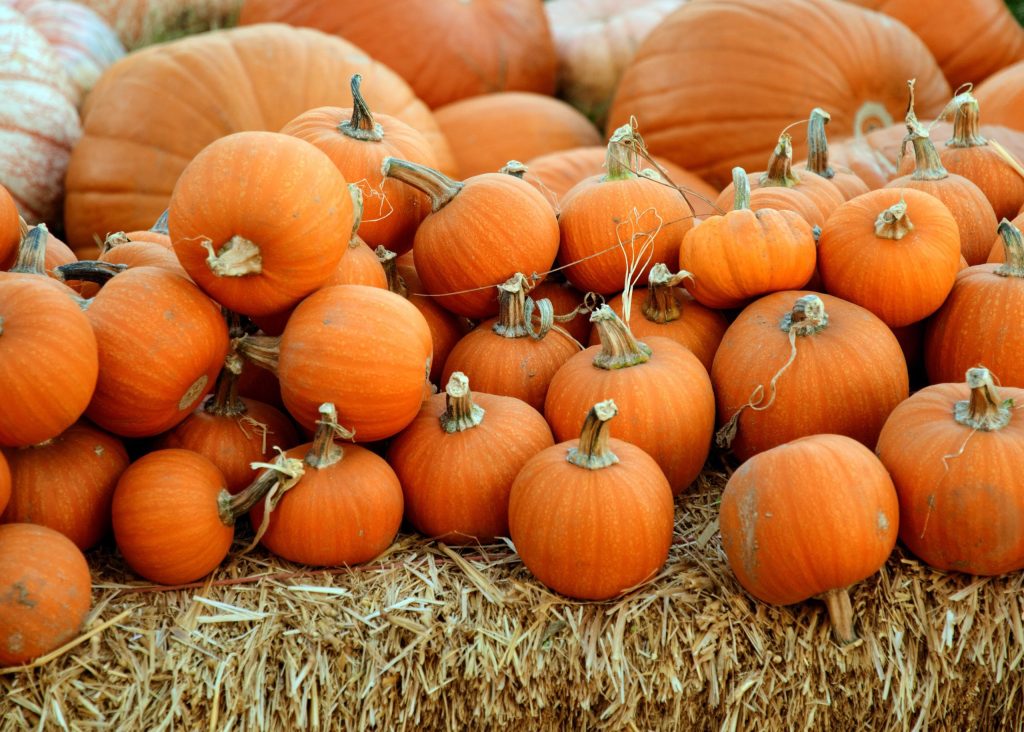Halloween is almost here, which means it’s time to get the decorations up, pick a costume, and stock up on candy! Halloween is such a fun family holiday, but – like most holidays – can create quite a bit of waste.
We generate waste in almost everything we do throughout spooky season, from pumpkin carving to the plastic used in candy wrappers and costumes (yep, polyester fabric is a type of plastic!). The bright side is that there are many ways to reduce, reuse, compost or recycle this unnecessary waste. And Halloween plastic waste is a great place to start!
Read on for a few steps you can take to reduce your waste this Halloween season.

1. Ditch Those Non-Recyclable Candy Wrappers
Look for wrappers with separate paper + foil/aluminum components
Candy wrappers are usually made of plastic and aluminum layered on top of each other, called multilayer packaging, which is not recyclable. However, some brands like Lindt, Ghirardelli & Chocolove, have chocolate bars and candies wrapped in a paper outer layer and a foil inner layer. Both layers can be recycled separately. You may also find candies wrapped in foil only, that’s a good option too!
Choose compostable
A chocolate or candy wrapped solely in paper is a great example of compostable packaging, like those from Alter Eco. But watch out! Those wrappers are NOT “home compostable”, they are “commercially compostable”, meaning that they can only be composted in a controlled environment such as an industrial composting facility like Compost Now.
Buy Bulk
The best type of packaging is no packaging at all! Stock up on a variety of chocolates, candies, almonds, chews, and other delicacies from your supermarket bulk aisle, then distribute them in individual brown bags and have fun trick or treating.

2. DIY, Swap, Paint or Thrift Your Costume!
Researchers in the UK found that more than 80% of the costumes sold in supermarkets and retailers are made of polyester – an oil-based plastic likely to end up in the landfill. Instead of running to Party City for a polyester costumer, try one of these more eco-friendly options!
Re-wear old costumes instead of buying new: those skeletons in the back of your wardrobe will thank you, and so will your wallet and the planet!
Costume swap: there are so many convenient ways to get secondhand costumes these days! Check your local “Buy Nothing Sell Nothing group” on Facebook, go to your local thrift store, watch out for a swap stand in one of Atlanta’s fall festivals (I was so glad to see a Halloween swap stand at Oakhurst Porchfest this year!) or host a Halloween costume swap at your home.
DIY Halloween costumes: there are many ideas on how to create costumes out of materials you already have at home. Here’s an example of an easy homemade skeleton costume.
Paint yourself scary: You can pick up non-toxic, cruelty free face paint super cheap from most fancy-dress shops and create amazing looks for almost any outfit you can imagine. YouTube has some great tutorials and when you wash the paint off, you’ll be waste-free!

3. Skip the Single-Use Decorations
Instead, try plastic free Halloween decorations this year! There are several great ideas online. Even better – decorate with local pumpkins and squash! You can even get some of these items in your weekly Fresh Harvest basket. Once they are done adorning your porch or doorstep, cook them into a tasty dish or compost them if they’ve gone bad.
If buying brand-new decorations, make sure you store them properly and pull them out again next year to reuse it or donate/sell to someone else.
How are you planning to reduce your waste this Halloween season?
About the Author
Leticia Socal is an Atlanta-based packaging and sustainability expert with over 15 years experience in the plastics industry. She believes sustainability education is crucial to drive real change in consumption patterns and improve our planet and is a passionate Fresh Harvest customer. Leticia advises startups and accelerators globally and mentors Atlanta students looking to pursue their careers in sustainability.
She is an accredited TRUE zero waste advisor and helps companies achieve their zero waste goals. Learn more about her work on www.natu.org, follow her on Twitter or connect on LinkedIn.




